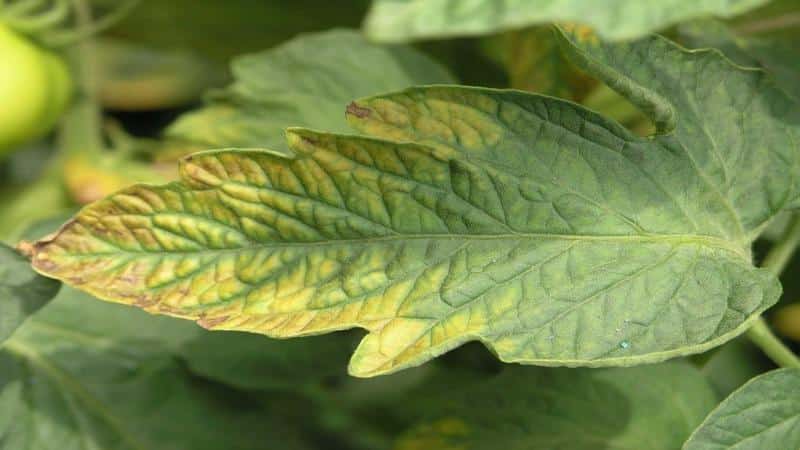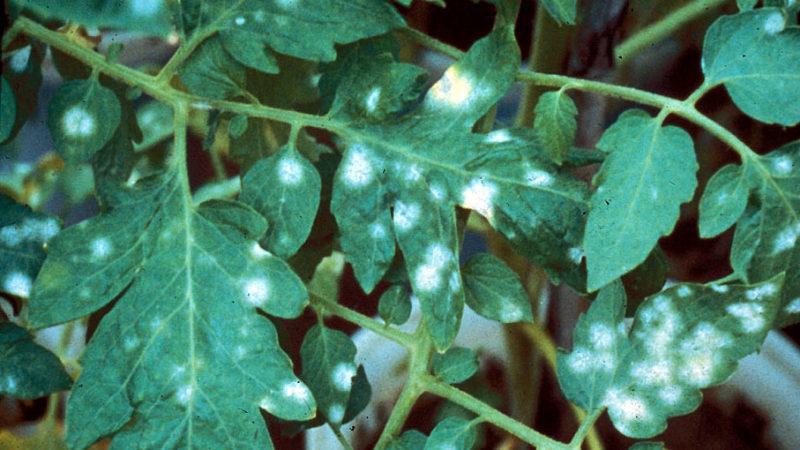What to do if white spots appear on the leaves of tomatoes in the greenhouse
Have you noticed spots on the leaves of tomatoes and don’t know what to do? There can be many reasons for their occurrence. Tomatoes are a rather demanding garden crop to grow. When the slightest deviation in the development of a plant appears, it is necessary to immediately respond to this “call for help”.
The sooner you find out what's wrong, the more harvest you can save. Next, we’ll figure out why white spots appeared on the leaves of tomatoes in the greenhouse and how this problem can be solved.
Possible causes
White spots on tomato leaves can occur due to completely different factors: it could be exposure to the sun, a lack of useful elements, or even the onset of a serious disease. Let's look at all the possible reasons in more detail.

Sunburn
A fairly common reason, especially among inexperienced gardeners. Most often, burns appear on the leaves of seedlings that are specially exposed to the sun for hardening.
Not only dried and yellowed leaves indicate the negative effects of ultraviolet radiation, but also small white spots. Over time, they can grow and cover the entire leaf blade. The leaf will not be able to fully function, and the plant will most likely die. Therefore, it is very important to notice the problem at the initial stage.
If small white spots just appear on the leaves from exposure to sunlight, the plant should be shaded immediately.It is also necessary to use growth stimulants and mineral fertilizers. However, be prepared that the harvest will still be smaller.
To prevent sunburn, seedlings should be hardened off gradually. It is best to transplant the plant into the ground in the evening or on a cloudy day. You should water the plants carefully so as not to splash the leaves: the water absorbs light well and acts as a magnifying glass.
Bacterial or viral infection
Very often, the cause of white spots is bacteria. Diseases that can begin to manifest themselves this way:
- Septoria (white spot).
- Powdery mildew.
- White rot.
- Mosaic.
Septoria
The causative agent of the disease is a fungus. Additional symptoms: the leaves dry out and curl, as does the stem itself. Light spots gradually darken and cover all leaves. The disease spreads quickly and can infect not only tomatoes, but also other crops: gooseberries, currants, grapes and some cereals.
Hot weather and high humidity promote the growth of fungus. Animals, insects and gardening tools can be carriers of misfortune.
Reference. The incubation period of septoria is 1-2 weeks.

Powdery mildew
A very dangerous fungal disease that can destroy all plantings in a greenhouse in one day. It all starts with small white dots, which gradually grow into large spots. The main cause of the disease is high humidity. Air temperature in this case does not play a key role. All parts of the plant are affected.
White rot
Caused by fungal spores. Unlike septoria, favorable conditions are considered to be low temperatures with high humidity.The fungus is often activated during spring frosts.
A white coating covers the leaf blades, stems and fruits. The plant completely rots very quickly. In this case, the leaves are usually covered with a coating on the back side.
Reference. In small greenhouses, tomatoes are most susceptible to rot.
Mosaic
Viral disease. Accompanied not only by white, but also colored spots. Tomatoes grown from seedlings are more likely to suffer from this disease. During the process, plants constantly experience various mechanical impacts and can become infected through contact with gardening tools.
Initial stage of late blight
At the very beginning of its development late blight may appear as small white spots. Then they darken, grow, the fruits become soft, and the leaves curl and fall off.
Late blight can be identified by the less pronounced color of the spots, which begin to change color very quickly.
Oedema (leaf swelling)
This is not a disease, but a physiological problem. Swelling of the leaves occurs due to excessive watering at low temperatures.
Drops of water remain on the surface of the leaves, under which blisters form. At first they are transparent, then they turn white. If the damage is severe, the entire leaf may swell completely.
Lack or excess of microelements
Such external signs can be provoked by a lack of important elements, in particular boron, which strengthens the plant’s immunity to disease. In this case, the spots appear first at the base of the leaf blade, gradually moving towards the tip. They have a light greenish color, which helps to recognize the problem in time and begin to apply fertilizer.
Excess of certain substances can trigger the same symptoms.For example, an excess amount of manure in the soil, excess fertilizers with potassium and sodium will show such a picture.
Mistakes in using pest control chemicals
If the chemical solution is prepared incorrectly or excessively sprayed with a ready-made purchased mixture, you can seriously damage the plantings. Due to the high concentration of the active substance in the solution, chemical burns appear on all parts of the plant.
The danger is that this process is irreversible. Therefore, it is very important to follow the instructions on insect or disease repellents carefully.

How to save the harvest
The first and most important thing to do when white spots are detected is to determine the cause of their occurrence and assess the extent of the damage. Depending on this, treatment methods will vary.
If it is sunburn, then the plants must be protected from the sun. There are also special “first aid” products: succinic acid, “Epin” and “Zircon”. These substances will help cope with stress, but it will not be possible to return burnt tissue.
In case of a fungal disease, you should use copper-containing preparations. They will stop the process of reproduction and development of infection. Such preparations include the fungicides “Zineb” and “Hom”, Bordeaux mixture, copper sulfate and 3% copper oxychloride. In this case, contaminated plates must be removed with a previously disinfected instrument. Sprinkle fresh sections with ash or treat with a solution of potassium permanganate.
There are no effective drugs to combat mosaic, so it is very important to choose only healthy seeds for planting and carry out annual soil replacement in the greenhouse and thermal disinfection.
Read also:
Top 10 best ways to prepare pickled zucchini for the winter.
In what and how to store zucchini for a long time - we create ideal conditions.
How to recognize a beet allergy and quickly get rid of its symptoms.
Preventive measures
An illness or sunburn that has already manifested itself is difficult, and sometimes impossible, to cure. To prevent stains from appearing on tomatoes, you must adhere to the following rules:
- Disinfection of seeds and soil before planting.
- Regular disinfection of garden tools.
- Proper crop rotation (the location of the beds should be changed every three years or more often).
- Timely weeding.
- Compliance with the watering regime.
- Maintaining a constant climate in the greenhouse (temperature from +20 to 28 degrees, humidity no more than 75%).
- Ventilation.
- Adding necessary fertilizers to the soil.
- No mechanical damage to the landings.

Tips and recommendations from experienced summer residents
Take advice from experienced gardeners on how to prevent crop loss:
- Do not plant seedlings on a hot day. If weather forecasters predict hot weather, it is better to postpone planting for a couple of days.
- Hopelessly diseased plants should be uprooted and burned. After the procedure, thoroughly wash your hands and wash your clothes to prevent re-infection.
- Before planting, it is better to prepare the seedlings for sunlight. To do this, place containers with seedlings in the sun every day for 1.5-2 hours for a week.
- When watering, the water should be warm or slightly cool.
- Everything should be in moderation: sun, water, and fertilizers.

Conclusion
With careful monitoring of plantings and a responsible approach to growing tomatoes, there is a high probability that no negative aspects will arise in the process.The best treatment for bacterial and fungal diseases, burns, etc. – this is prevention.
By following the advice of experienced gardeners, you can minimize the chance of chemical, mechanical or painful spots on tomatoes with all the ensuing consequences.
You write nonsense, I’m tired of reading. You need to be brief and meaningful
Too many letters - you can't read them all